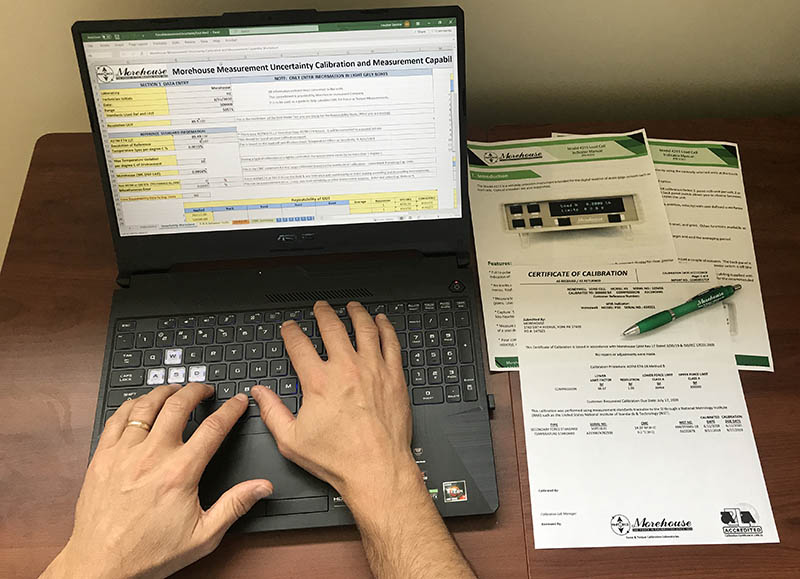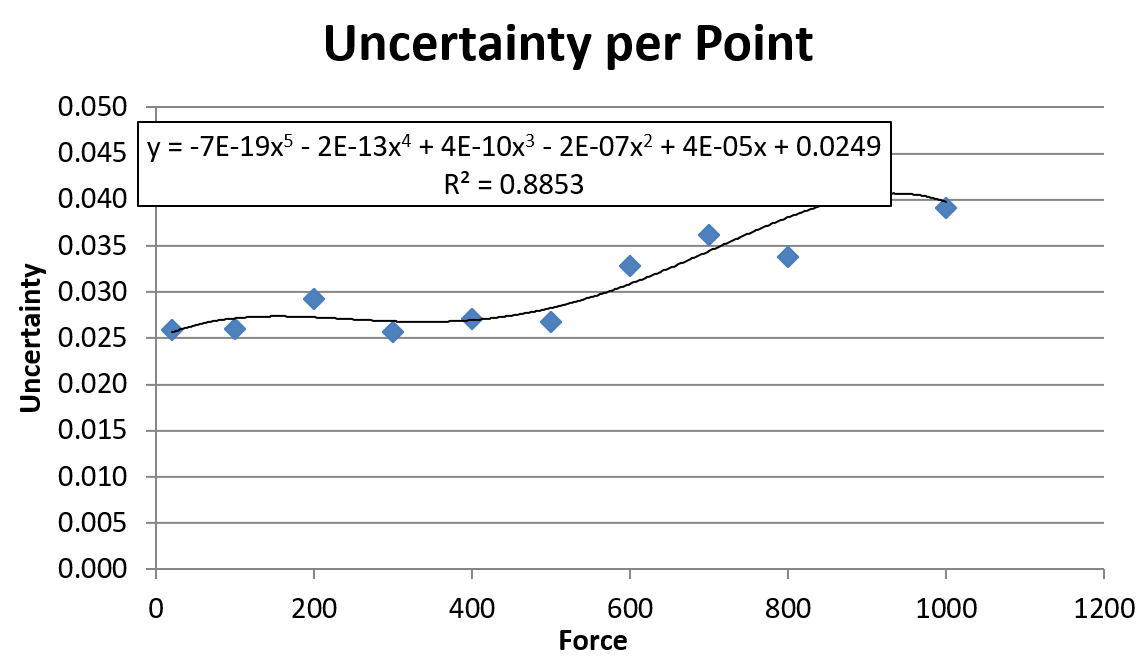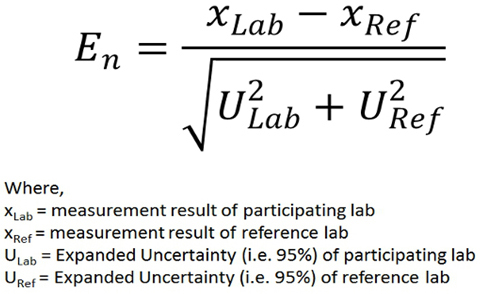
Discover your Force Measurement Uncertainty
How to Reduce Measurement Errors and Meet Accreditation Requirements
Download Now




With a few additional data points, our Force Measurement Uncertainty Tool can also calculate the En ratio for proficiency testing. This can be used to satisfy ISO 17025 section 7.7 j) & 7.7.2 b).
The force measuring instrument should be calibrated by dead weight primary standards to meet Proficiency Testing requirements.
The Force Measurement Uncertainty Tool meets the requirements for the end-user of a force-measuring instrument to comply with JCGM 100:2008. The calculation of uncertainty is a requirement per ILAC P-14:09/2020 Policy for Measurement Uncertainty in Calibration Section 5.1, which states explicitly, "The Accreditation Body shall ensure that an accredited calibration laboratory reports the measurement uncertainty in compliance with the GUM."
The Force Measurement Uncertainty Tool meets compliance with the GUM by:
